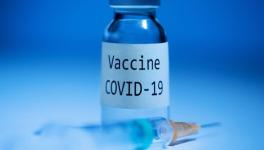COVID-19: Uttar Pradesh and its Problem of Numbers
Image for representational use only. Image Courtesy: Livemint
In Yogi Adityanath’s Uttar Pradesh, data is managed well. On June 17, according to a news report, during a meeting the Chief Minister was having with his team, he was informed that the death toll due to COVID-19 in the state was 30. Later that day the number had reduced substantially, ostensibly because the deaths due to other causes had erroneously been included as COVID-19 deaths, much to the annoyance of the chief minister.
Even then, the numbers keep rising, not of deaths, but of confirmed cases, although there has been a bit of flattening of the curve in Agra and Bulandshahr.

Lucknow, Gautam Buddh Nagar, Gorakhpur and Kanpur districts seem to have caseload numbers growing exponentially.
But the two contiguous districts that belong to the National Capital Region (NCR), Ghaziabad and Gautam Buddh Nagar (Noida and Greater Noida) have been of particular concern.

Ghaziabad, Hapur, Bulandshahr, Meerut and Baghpat
Of the 53,288 cases across the state as of July 21, 46 per cent are from the Paschim region. Gautam Buddh Nagar had 4,293 cases and Ghaziabad 4,126, while Meerut had 1,885, with 5,94,638 tests, compared with Bundelkhand which has had only about 54,000 tests. The testing figures for the two major districts Jhansi (1,366 cases) and Lalitpur (129) in the district were unavailable.
With less than half of the number of tests done in Awadh when compared with the Paschim region of the state, Kanpur Nagar (2,841), a major urban district and the capital Lucknow (4,503), are fast emerging as hotspots.
Varanasi, which is in Purvanchal, has 1,552 confirmed cases, while the other important centre in the region, Ghorakpur, has 1,185. Purvanchal as a region is not doing so well with 26% of the cases being from the region.
The government has set out to conduct 50,000 tests per day in an announcement on July 12, wily nilly, and not based on what is required. The best it has done since then was on July 17 when it did more than 54,000 tests, the only time the state crossed the daily target set.
Testing of course is related to the testing infrastructure available. According to government data, the state has 144 centres conducting RT-PCR and TrueNAT tests, 119 government ones and 28 private centres for a state the size of Uttar Pradesh.
The worsening situation has prompted the government to declare all weekends as lockdown, but apparently markets will be sanitised, and the government has suggested that “industrial units should also sanitise their places on Saturday and Sunday.”
The story of Uttar Pradesh is not complete without highlighting the situation of migrants workers and the ASHA workers. In one of the most difficult exercises following the dismal treatment of migrants workers across the country, the returning migrants where tracked by ASHA workers. Equipped with just a device to check temperature and no other personal protective equipment worth the name, they reportedly tracked more than 30 lakh migrants over two phases.
These are still early days, and with rising numbers, the challenges before the administration are huge. It is essential for the government to accurately report data on cases, deaths as well as testing, so that people can comprehend what is happening, and so that the government is able to optimally prepare for what lies ahead.
Get the latest reports & analysis with people's perspective on Protests, movements & deep analytical videos, discussions of the current affairs in your Telegram app. Subscribe to NewsClick's Telegram channel & get Real-Time updates on stories, as they get published on our website.
























